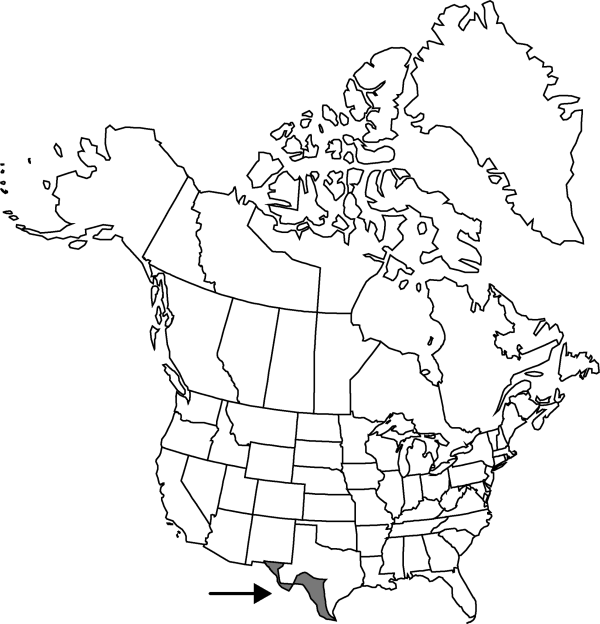Difference between revisions of "Echinocereus enneacanthus"
in F. A. Wislizenus, Mem. Tour N. Mexico, 111. 1848.
FNA>Volume Importer |
FNA>Volume Importer |
(No difference)
| |
Revision as of 22:22, 16 December 2019
Plants branched forming dense or lax clumps with 20–100(–500) branches, usually branching before flowering. Stems some-what lax often sprawling, longest stems sometimes prostrate, cylindric, 8–40(–100?) × 3.2–15 cm; ribs (6–)7–10(–12), crests essentially uninterrupted; areoles (11–)14–52 mm apart. Spines 6–14 per areole, straight or central spines slightly curved throughout their lengths, ± opaque, white, pale tan, or purplish gray, often extensively tipped or banded with brown; radial spines 5–10(–13) per areole, 9.5–40(–47) mm, usually less than 1/2 as long as central spines; central spines 1–4(–5) per areole, all or mostly projecting, abaxial spine porrect or descending, frequently compressed or angular in cross section (sometimes sulcate, keeled, or striate), (12–)20–84(–96) mm. Flowers (4.5–)5–7.5 × 5–5.6(–9) cm; flower tube 10–30 × 10–22(–40) mm; flower tube hairs 1–2 mm; inner tepals pink or magenta, darkest proximally, 28–55 × 8–14(–20) mm, tips relatively thin and delicate; anthers yellow; nectar chamber 4–6 mm. Fruits pale yellow-green or dull reddish, 20–30 mm, pulp white or pale pink. 2n = 22.
Distribution

Tex., Mexico.
Discussion
Varieties 2 (2 in the flora).
The commonly recognized concept of Echinocereus enneacanthus var. enneacanthus (W. O. Moore 1967; D. Weniger 1970; L. D. Benson 1982) pertained to the small eastern var. brevispinus.
Selected References
None.
Key
| 1 | Stems (5-)8-14(-15) cm diam.; radial spines 5-8(-9) per areole; central spines 56-84(-96) mm | Echinocereus enneacanthus var. enneacant |
| 1 | Stems slender 3.2-4.5(-7.5) cm diam.; radial spines 8-10(-13) per areole; central spines (12-)20-44(-50) mm | Echinocereus enneacanthus var. brevispin |